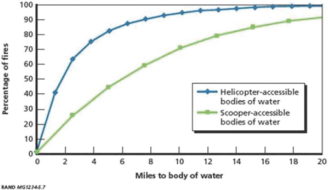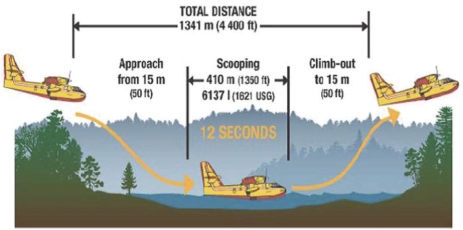The information in this preliminary prospectus is not complete and may be changed. Neither we nor the selling securityholders may sell these securities until the registration statement filed with the Securities and Exchange Commission is effective. This preliminary prospectus is not an offer to sell these securities and is not soliciting an offer to buy these securities in any jurisdiction where the offer or sale is not permitted.
PRELIMINARY PROSPECTUS
SUBJECT TO COMPLETION, DATED JANUARY 30, 2023

Bridger Aerospace Group Holdings, Inc.
120,277,192 Shares of Common Stock
Up to 26,650,000 Shares of Common Stock Issuable Upon
Exercise of the Warrants
Up to 9,400,000 Warrants
This prospectus relates to the offer and sale from time to time by the selling securityholders named in this prospectus (the “Selling Holders”), or their permitted transferees, of (a) up to 120,277,192 shares of our common stock, $0.0001 par value (“Common Stock” ), consisting of (i) up to 102,322,388 shares of Common Stock (the “Legacy Bridger Consideration Shares”) issued or issuable to the direct and indirect equityholders of Legacy Bridger (as defined herein) in connection with the Business Combination (as defined herein) at an implied equity consideration value of $10.00 per share of Common Stock, inclusive of up to 63,240,644 shares of Common Stock that may be issuable upon the conversion of shares of Series A Preferred Stock (as defined herein); (ii) up to 5,951,615 shares of Common Stock issuable to the holders of certain restricted stock units (the “D&O RSUs Shares”) that were issued by Legacy Bridger and assumed by us in connection with the closing (the “Closing”) of the Business Combination, which were granted at no cost to the recipients thereof; (iii) up to 2,488,189 shares of Common Stock (the “Founder Shares”) that were originally issued in a private placement to JCIC Sponsor (as defined herein) prior to the JCIC IPO (as defined herein), which were acquired at a purchase price equivalent to approximately $0.003 per share; (iv) up to 115,000 shares of Common Stock (the “Note Shares”) originally issued at the Closing in full consideration of the outstanding $1,150,000 loan balance under the Promissory Note (as defined herein) for an equivalent purchase price of $10.00 per share; and (v) up to 9,400,000 shares of Common Stock (the “PPW Shares”) issuable upon the exercise, at an exercise price of $11.50 per share, of the private placement warrants originally issued in connection with the JCIC IPO (the “Private Placement Warrants”) and (b) up to 9,400,000 Private Placement Warrants originally acquired by JCIC Sponsor in connection with the JCIC IPO for $1.00 per Private Placement Warrant.
We are registering the securities for resale pursuant to the Selling Holders’ registration rights under certain agreements between us and the Selling Holders, as applicable to each Selling Holder. Our registration of the securities covered by this prospectus does not mean that the Selling Holders will offer or sell any of the securities. The Selling Holders may offer, sell or distribute all or a portion of their shares of Common Stock or Private Placement Warrants publicly or through private transactions at prevailing market prices or at negotiated prices. We will not receive any of the proceeds from any resale of the Common Stock or the Warrants being offered for resale in this prospectus (the “Resale Securities”).
We provide more information about how the Selling Holders may sell their securities the section of this prospectus entitled “Plan of Distribution.” We have agreed to bear all of the expenses incurred in connection with the registration of these securities. The Selling Holders will pay or assume underwriting fees, discounts and commissions or similar charges, if any, incurred in the sale of securities by them.
This prospectus also relates to the issuance by us of up to an aggregate of 26,650,000 shares of Common Stock that may be issued upon exercise of the Warrants (as defined herein). We would receive the proceeds from any exercise of any Warrants for cash, and we could receive up to an aggregate of approximately $306.5 million from the exercise of the Warrants, assuming the exercise in full of all of the Warrants for cash. The Warrants include 9,400,000 Private Placement Warrants and 17,250,000 Public Warrants, each of which has an exercise price of $11.50 per share of Common Stock. We believe the likelihood that Warrant Holders will exercise the Warrants, and therefore the amount of proceeds that we would receive from such exercises, depends on the trading price of our Common Stock. On January 27, 2023, the closing price of our Common Stock was $12.44 per share. However, in the future, our Warrants may fall “out-of-the money”, which means the market price of our Common Stock is less than the exercise price of a warrant holder’s Warrants ($11.50 per share). For so long as the Warrants remain “out-of-the money, ” we believe our Warrant Holders will be unlikely to cash exercise their Warrants, resulting in little or no cash proceeds to us. Our Common Stock trading price may fall and then remain below $11.50 until January 24, 2028, when the Public Warrants and Private Placement Warrants expire, and therefore we may not receive any proceeds from the exercise of Warrants to fund our operations. We expect to use any net proceeds received from the exercise of the Warrants for general corporate purposes. See the section of this prospectus entitled “Use of Proceeds.” To the extent that any of the Warrants are exercised on a “cashless basis,” we will not receive any proceeds upon such exercise.
We may amend or supplement this prospectus from time to time by filing amendments or supplements as required.
Our Common Stock and the Warrants are listed on the Nasdaq Global Market (“Nasdaq”) under the symbols “BAER” and “BAERW,” respectively. On January 27, 2023, the closing price of Common Stock was $12.44 per share and the closing price of the Warrants was $0.23 per warrant.
The Resale Securities represent a substantial percentage of the total outstanding shares of our Common Stock as of the date of this prospectus. The shares of Common Stock being offered for resale pursuant to this prospectus represent approximately 85.0% of our total shares of outstanding Common Stock on a fully diluted basis (inclusive of shares of Common Stock issuable upon exercise of the Warrants, the vesting and settlement of the outstanding restricted stock units, and the conversion of the shares of Series A Preferred Stock). The sale of all the Resale Securities or the perception that these sales could occur, could result in a significant decline in the public trading price of our securities. Even if the current trading price of our Common Stock is at or significantly below $10 per share, the price at which the units were issued in the JCIC IPO, certain of the Selling Holders, including JCIC Sponsor, may have an incentive to sell because they will still profit on sales due to the lower price at which they purchased their shares compared to the public securityholders. See the section of this prospectus entitled “Risk Factors—Risks Related to the Ownership of Our Securities—Future sales, or the perception of future sales, of a substantial number of shares of our Common Stock, by us or our stockholders in the public market may cause the price of our Common Stock and Warrants to decline. The securities being offered for resale in this prospectus represent a substantial percentage of our outstanding Common Stock, and the sales of such securities, or the perception that these sales could occur, could cause the market price of our Common Stock to decline significantly.” Additionally, certain Selling Holders, including JCIC Sponsor, may experience a positive rate of return on the sale of their shares covered by this prospectus even if the market price per share of Common Stock is below $10.00 per share, while the public securityholders may not experience a similar rate of return on the securities they purchased due to differences in the purchase prices and the current trading price. See the section of this prospectus entitled “Risk Factors—Risks Related to the Ownership of Our Securities—The Selling Holders can earn a positive return on their investment, even if other securityholders experience a negative rate of return on their investment in the post-Business Combination company.”
We are an “emerging growth company” and a “smaller reporting company” as those terms are defined under applicable federal securities laws, and as such, are subject to certain reduced public company reporting requirements.
AN INVESTMENT IN OUR SECURITIES INVOLVES SIGNIFICANT RISKS. YOU SHOULD CAREFULLY CONSIDER THE RISK FACTORS BEGINNING ON PAGE 15 OF THIS PROSPECTUS BEFORE YOU MAKE YOUR DECISION TO INVEST IN OUR SECURITIES.
Neither the Securities and Exchange Commission nor any other regulatory body has approved or disapproved of these securities or passed upon the accuracy or adequacy of this prospectus. Any representation to the contrary is a criminal offense.
The date of this prospectus is [ ], 2023.


